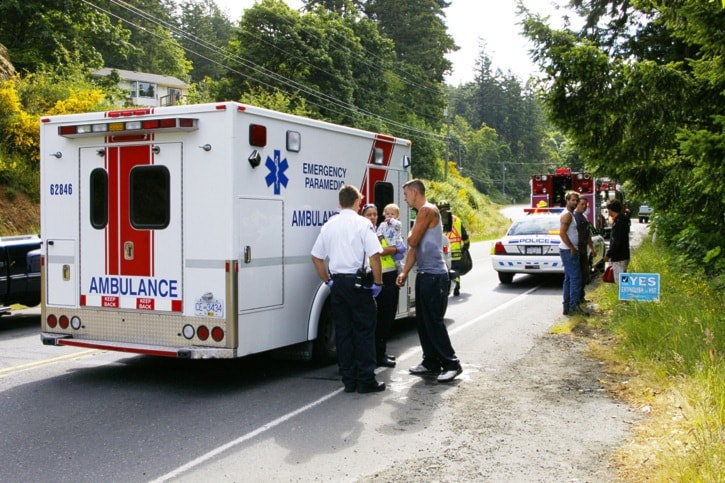The Sooke ambulance station is part of the provincial British Columbia Ambulance Service (BCAS) and responds to medical emergencies in the District of Sooke and surrounding areas.
BCAS may also task local ambulances to respond to other communities covered by other provincial ambulances much the way that fire and police departments do with mutual aid agreements outside their communities of response.
Sooke has two 24- hour emergency ambulances. Our community is also supported by ambulances from the Westshore and Greater Victoria, when needed. For the higher acuity ambulance calls the local ambulances are layered with the Advanced Life Support ambulances from Victoria.
June was Stroke Awareness month and while the month has now passed BCAS would like to report that 27 per cent of the 181 calls that BCAS attended to in Sooke were for symptoms related to heart and stroke incidents.
Time is of the essence for heart and stroke medical emergencies. During a heart attack or stroke oxygen carrying blood is not reaching part of the heart muscle or brain. Without a steady supply of oxygen, heart muscle and brain cells can be damaged. This is why it is critically important to recognize and respond immediately to the warning signs.
BC Ambulance in conjunction with the Vancouver Island Health Authority has medical protocols and specific patient destination hospitals for Heart and Stroke Emergencies. Heart patients are destined to go to the Royal Jubilee Hospital where the catheter lab is. For stroke patients the preferred patient destination is the Victoria General Hospital for its neurology specialties.
The Heart and Stroke Foundation, list the key signs of these medical emergencies as:
Heart Attack
Warning Signs
Pain, sudden discomfort or pain that does not go away with rest,
pain that may be in the chest, neck, jaw, shoulder, arms or back
pain that may feel like burning, squeezing, heaviness,
tightness or pressure,
chest pain or discomfort that is brought on with exertion and goes away with rest. In women, pain may be more vague
Shortness of breath - difficulty breathing
Nausea – indigestion, vomiting
Sweating - cool, clammy skin
Fear – anxiety, denial
Stroke Signs
Weakness - sudden loss of strength or sudden numbness in the face, arm or leg, even if temporary.
Trouble speaking - sudden difficulty speaking or understanding or sudden confusion, even if temporary.
Vision problems - sudden trouble with vision, even if temporary.
Headache - sudden severe and unusual headache.
Dizziness - sudden loss of balance, especially with any of the above signs.
Don’t delay if you are exhibiting any signs of heart attack or stroke, calling 911 will ensure you get the care you need from BCAS paramedics and dispatch staff.
Bryon
Longeway Unit Chief BC Ambulance Service
Station 107
